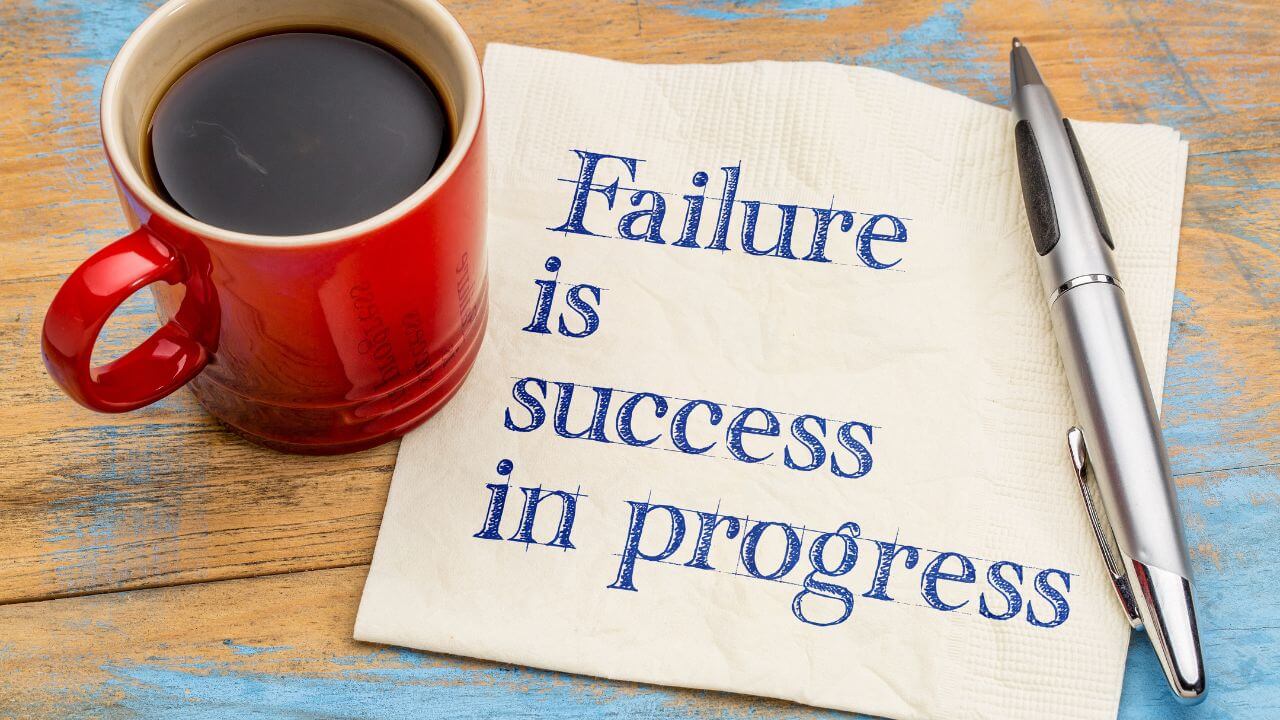I Fail all of the time and I use a capital F in fail because some of the failures that I have had have been some amazing doozies worthy of a spot in the Guinness Book of World Records.
What makes me different than many is that I am actually proud of many of my failures and have no problem sharing the fact that I am far from perfect……….
The difference between me and the masses when it comes to failure is that I do not make excuses for the things that go wrong, I try and learn from the failure so that the next time I approach a problem, I do it with a little more knowledge than I had the day before.
This is what can make failure a good thing, important and necessary. Without failure, you cannot have success. If you do not try, you cannot fail, if you cannot fail, then you cannot possibly succeed. Success comes from your ability to look at your failures and figure out why they turned into heaping piles and crap instead of amazing triumphs.
Think about this, you took a lot of time to plan and implement something that turned into an epic failure, you did not go into it thinking that it was going to collapse, so it is on you to figure out why it toppled over and then create a plan to keep it standing or clear away the debris for the next time.
If you are always trying new sessions, new styles, new speakers, or perhaps trading the boring rubber chicken for Indian or Mexican food, not all attendees are going to like what you do and that is the point. You are challenging people to have a little passion, a different view and an opinion. Sometimes you will fail, sometimes you will succeed, sometimes you will have to go back to the drawing board and think about it, but understanding why something soars or crashes makes it possible to recreate, reinvent or scrap.
Here is an example of how failure can actually be turned into success.
A few years ago before Pecha Kucha was a rage, we convinced a client that they should try something different. We all sat around and decided that all of the speakers on the second afternoon would only have 10 minutes.. no more, that was it, stick a fork in them, we were turning off the sound if they went over their allotted time. They would not have any PowerPoints but could have one picture that we would put up on the screen… a background if you will.
This started out being a cool idea and ended up being a disaster on the planning end. The speakers were not used to this, some of them went over time, some of them could not speak without 80 slides and some talked like chipmunks on crack trying to get mountains of information crammed into the 10-minute limit. It was like a 3 ring circus with no ringmaster and 50 lions.
From our perspective, it was a nightmare…. a pure and epic failure.
The client said… We are never doing that again.
But viewed from a different angle, from an attendee perspective, it was unique, it was new and it was happening. The surveys came back and our little experiment in terror was the highest-rated portion of the conference. What we perceived as a failure was the thing that all of the conference attendees loved the most. They liked the style, they liked the spontaneity, and most of all they liked the no PowerPoint rule. The attendees were actually having fun, laughing, and thinking.
That is when we went back to the drawing board and figured out that it was not the idea that failed, it was the implementation. We worked to get the speakers on board early the next conference, we let them know what was expected and we made sure that their was an understanding………….BAM, the next time around it went like clockwork. Now, the speakers were ready, presenting one point (not 100) and knowing that they had to move off because the next speaker was coming right behind them.
Most would have abandoned the idea and gone back to the old way. What we learned was that our idea was 100% great, it was us that was the problem and we worked to fix that issue, thus saving an amazing idea.
So, I guess the moral of the story is to go out on a limb and try something new. If you fail, so what, you can now cross that off the list and know that it will not work, you may be surprised that a failure is nothing more than successfully understanding how to not do something.


